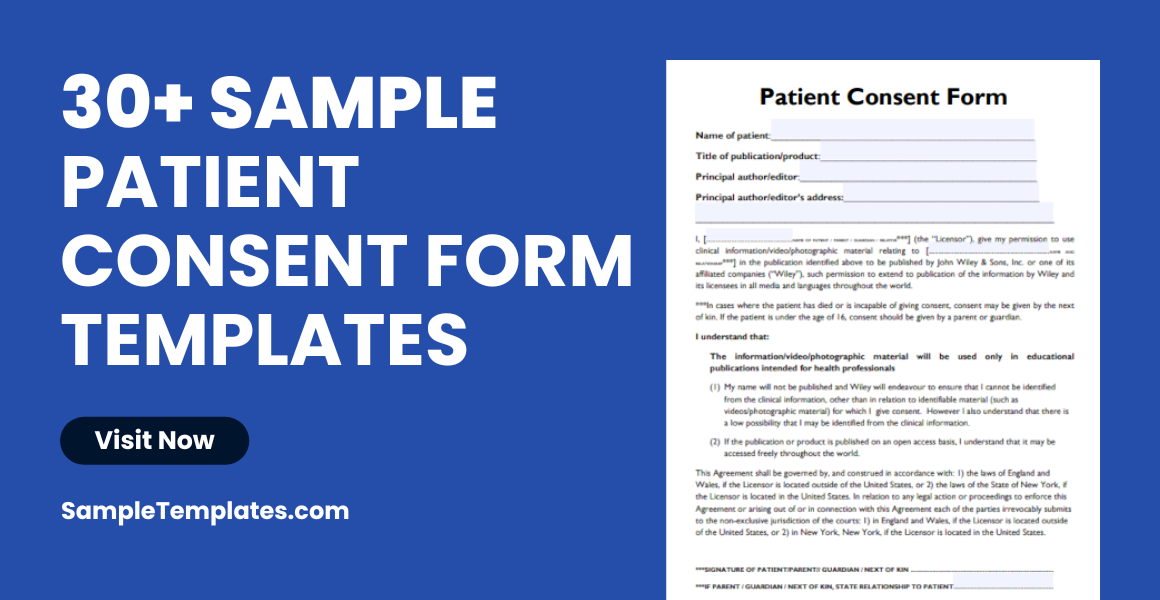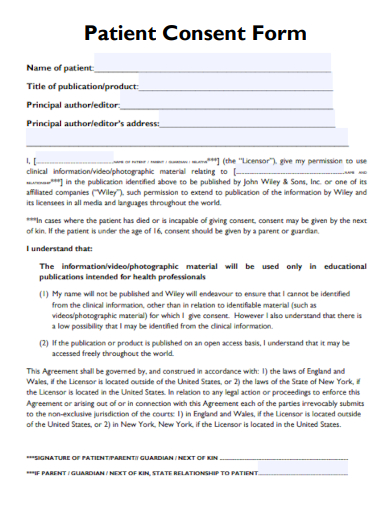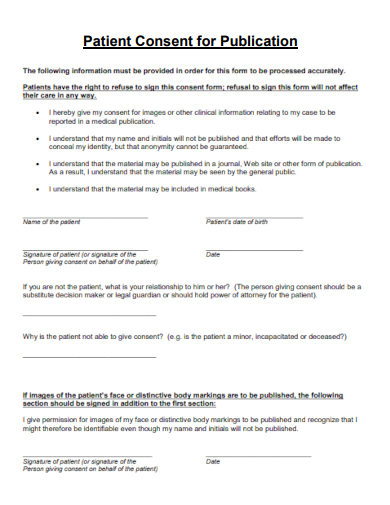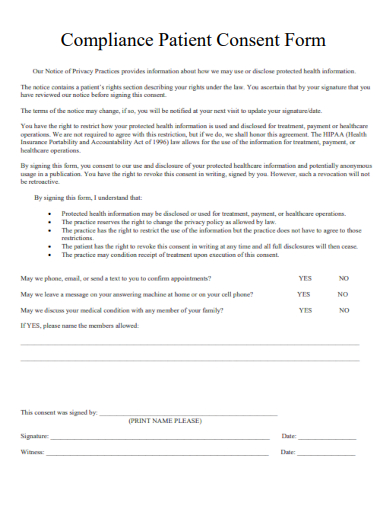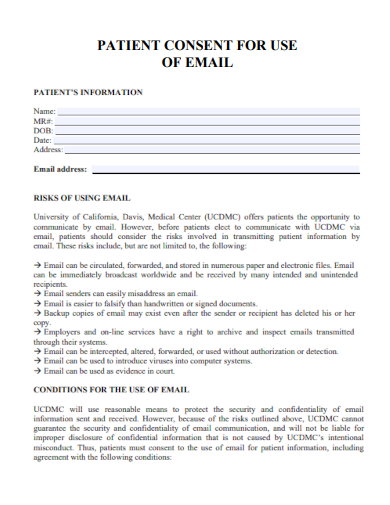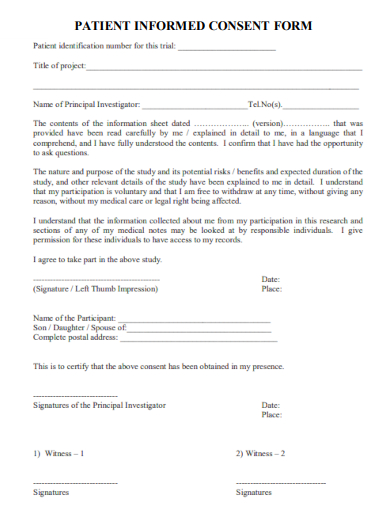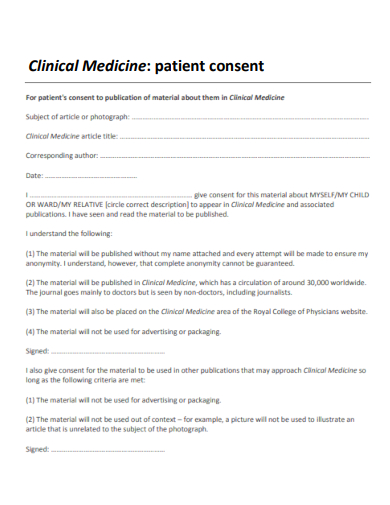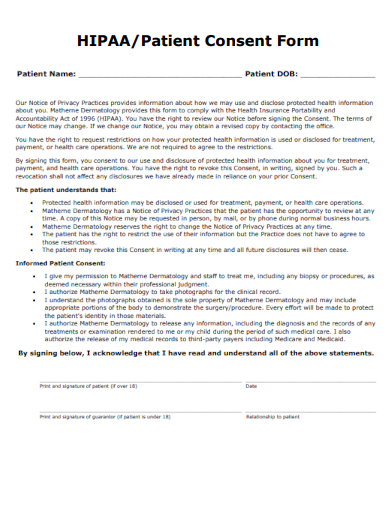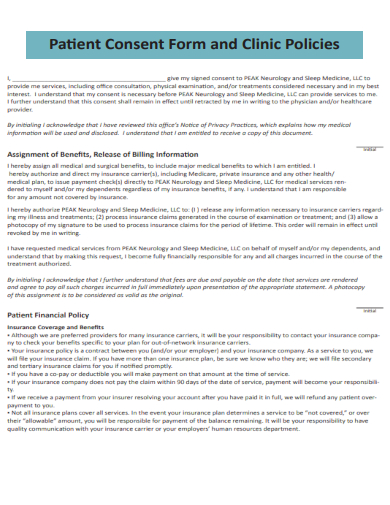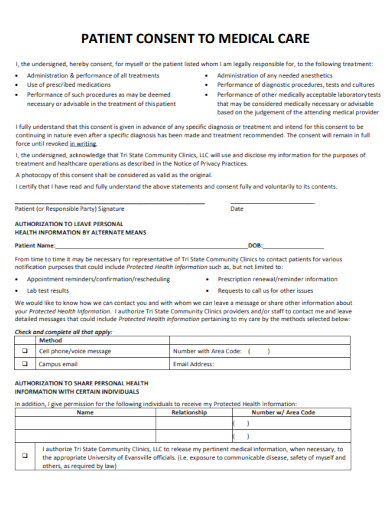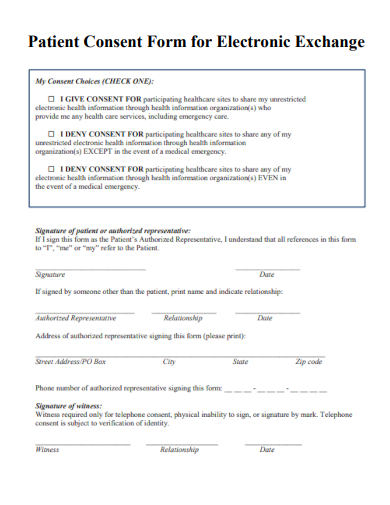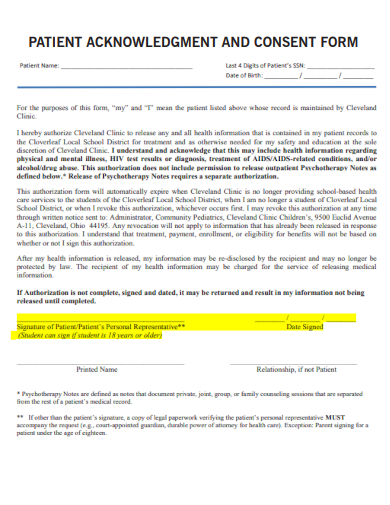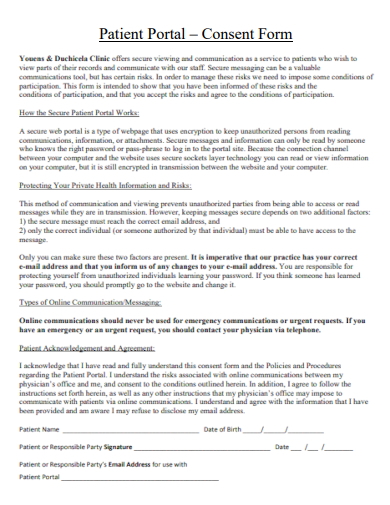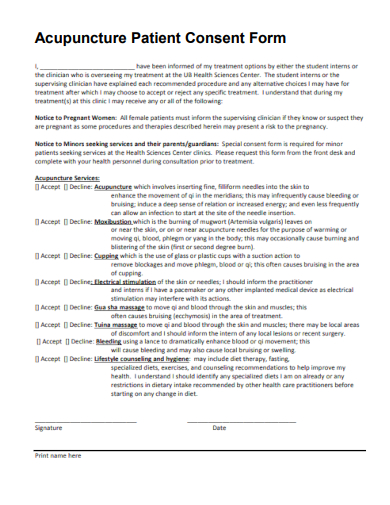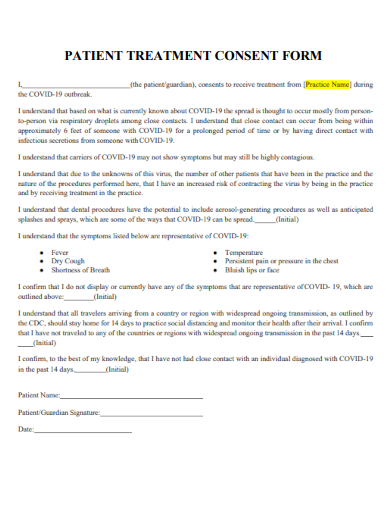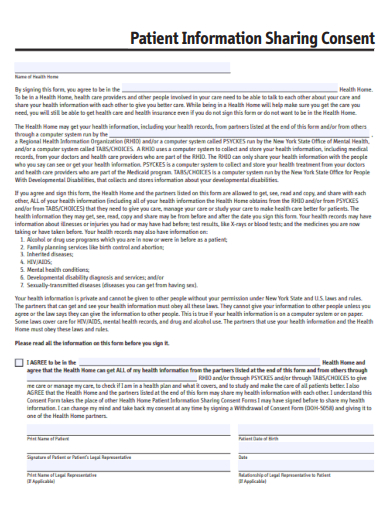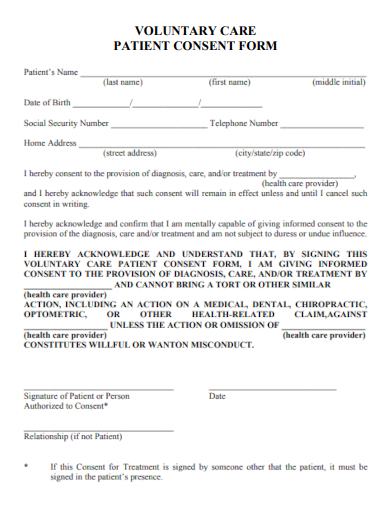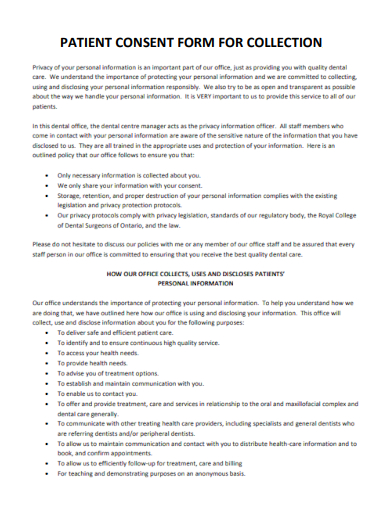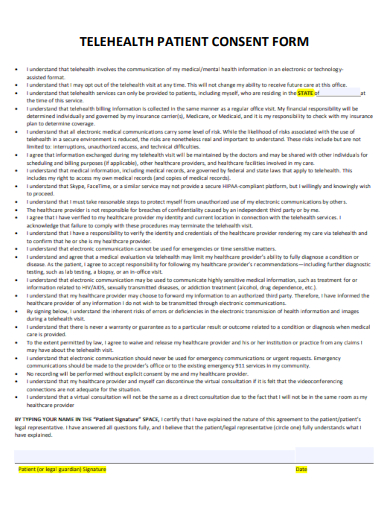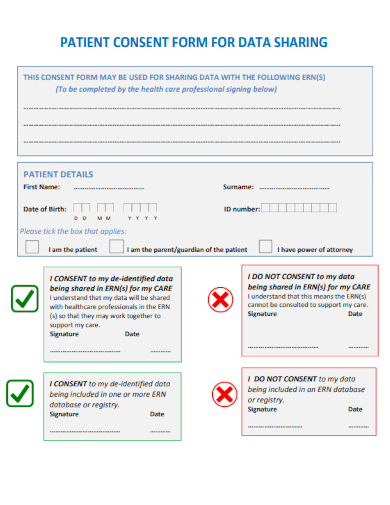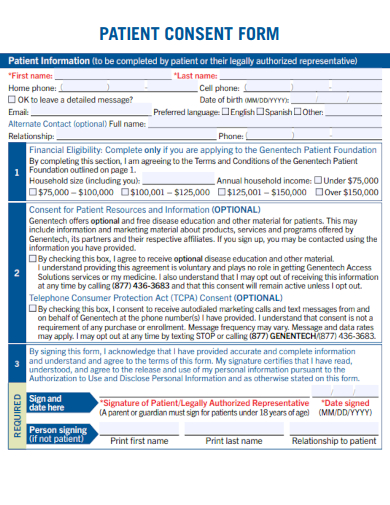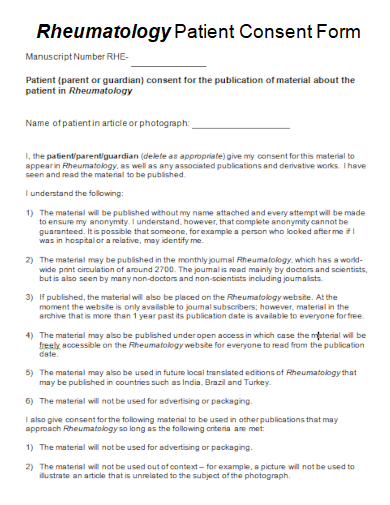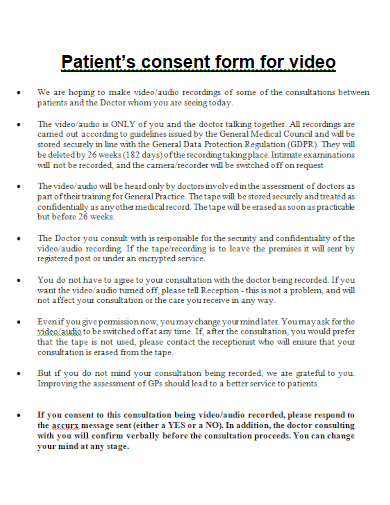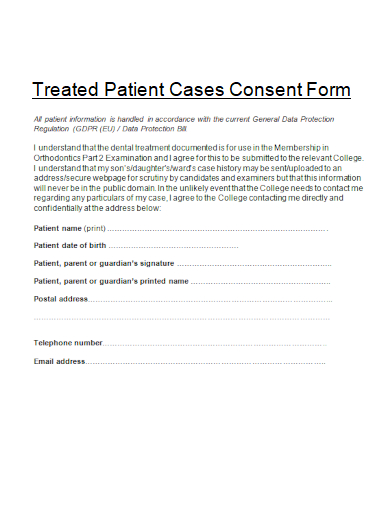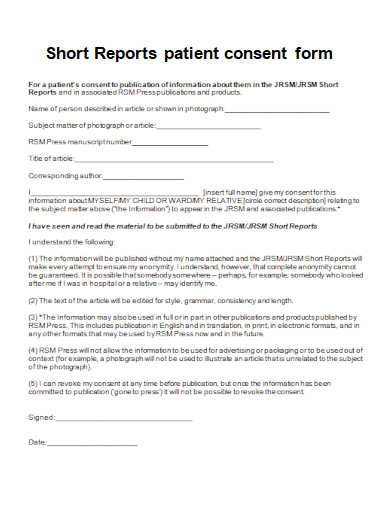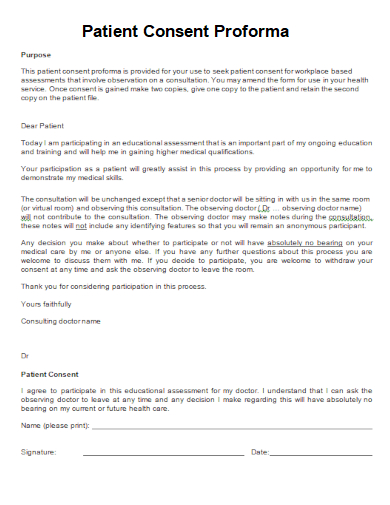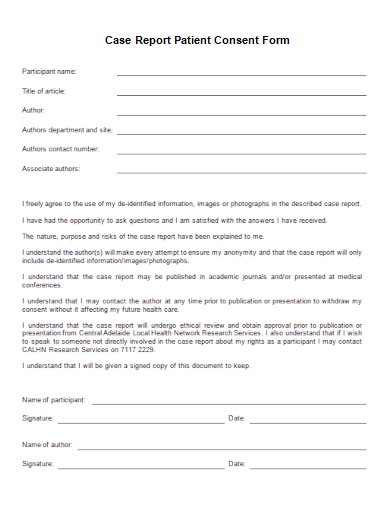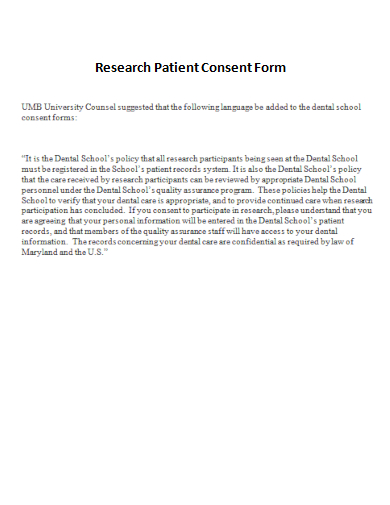Embark on a journey toward streamlined healthcare procedures with our Sample Patient Consent Form Template. This resource serves as a pivotal tool for medical professionals, ensuring that patient agreements are transparent and legally sound. It facilitates clear communication of medical processes, risks, and patient autonomy, making it essential in safeguarding both parties’ interests. With an emphasis on clear language and a user-friendly layout, our template is designed to enhance the patient experience and uphold the highest standards of care. Engage with a template that not only meets compliance regulations but also fosters a trustworthy environment for patients to make informed health decisions.
FREE 30+ Patient Consent Form Samples
1. Patient Consent Form Template
2. Patient Consent for Publication Form Template
3. Compliance Patient Consent Form Template
4. Patient Consent for Use of Email Form Template
5. Patient Informed Consent Form Template
6. Clinical Medicine Patient Consent Form Template
7. HIPAA & Patient Consent Form Template
8. Patient Consent Form and Clinic Policies Template
9. Patient Medical History and Consent Form Template
10. Patient Consent to Medical Care Form Template
What is a patient consent form?
A patient consent form is a legal document used in the healthcare setting to ensure that a patient or their authorized representative has been fully informed about their medical condition and the proposed treatments or procedures. This form is pivotal in upholding a patient’s right to make informed choices about their healthcare. It embodies the principle of informed consent, a foundational element in medical ethics and law which mandates that patients should understand the benefits, risks, alternatives, and potential outcomes of any medical intervention before agreeing to it.
The core purpose of the consent form is to facilitate a dialogue between the healthcare provider and the patient. This exchange of information is not merely a formality but a process that empowers the patient with knowledge and understanding. When a patient signs the consent form, they are not just giving their permission; they are acknowledging that they have received all the necessary information to make a decision that aligns with their values and wishes.
A standard patient consent form typically includes several key elements. It begins with the patient’s personal information, such as name, date of birth, and contact details. The form will then describe the specific procedure or treatment in question, along with a detailed explanation of why it is necessary. It should lay out, in terms the patient can understand, what will happen during the procedure, how it will be performed, and who will be responsible for the various aspects of the patient’s care.
The form must also cover the potential benefits and expected outcomes, as well as any possible alternatives, including the option of not proceeding with the treatment. This information is crucial as it allows patients to weigh their options and consider what is best for their personal situation. Furthermore, the form should explicitly outline the potential risks and complications associated with the procedure, no matter how rare, to ensure that the patient’s consent is truly informed.
Consent forms also address issues of privacy and confidentiality, reassuring patients that their personal health information will be protected in accordance with privacy laws and regulations. They may include clauses about billing and acknowledgment that the patient understands their financial responsibility for the treatment.
In special scenarios, such as clinical trials or experimental treatments, patient consent forms take on even greater importance. They may provide more extensive details about the nature of the trial, the unknowns involved, and the voluntary nature of participation. These forms serve not only to inform but also to protect both the patient and the medical institution or researchers involved.
Once a patient consent form is filled out and signed, it becomes part of the patient’s medical records, serving as a legal document that the patient has consented to receive the medical care as described. It is important to note that consent is not a one-time transaction but a continuous process. Patients have the right to withdraw their consent at any time, and healthcare providers have an ongoing duty to inform patients of any new information that might affect their decision to continue with treatment.
The significance of a patient consent form cannot be overstressed. It is a manifestation of the respect for patient autonomy and a functional tool that underpins the trust in the patient-provider relationship. It stands as a testament to informed consent, not merely in the letter of the law but also in the spirit of compassionate and ethical medical care.
11. Patient Consent Form for Electronic Exchange Template
12. Patient Acknowledgment & Consent Form Template
13. Patient Portal Consent Form Template
14. Basic Patient Consent Form Template
15. Acupuncture Patient Consent Form Template
16. Patient Treatment Consent Form Template
17. Patient Information Sharing Consent Form Template
18. Voluntary Care Patient Consent Form Template
19. Patient Consent Form for Collection Template
20. Telehealth Patient Consent Form Template
What are the types of patient consent?
Patient consent in the medical field is not a one-size-fits-all solution; it is multifaceted, with different types based on the situation, the patient’s condition, and the nature of the medical intervention. Understanding these variations is crucial for healthcare providers to ensure that they comply with ethical and legal standards and for patients to be aware of their rights in the healthcare decision-making process.
Informed Consent
Informed consent is the most comprehensive form of consent in healthcare. It involves a detailed discussion between the healthcare provider and the patient about a proposed medical intervention. The provider must convey all pertinent information, including the benefits, risks, and alternatives to the treatment. Patients should have ample opportunity to ask questions and must provide voluntary consent without coercion.
Implied Consent
Implied consent is a subtler form of consent that is presumed from the actions of the patient. For example, when a patient presents their arm for a blood draw or follows through with preparatory procedures for a diagnostic test, their cooperation is taken as consent for that procedure.
Explicit Consent
This form of consent is given directly and explicitly, either verbally or in writing. It is most commonly used for procedures that carry significant risk, are invasive, or involve anesthesia or sedation. Surgery, chemotherapy, and participation in clinical trials typically require explicit consent.
Advance Directives
Advance directives are legal documents through which patients provide consent regarding their future healthcare. These documents come into play when patients are no longer able to make decisions for themselves due to illness or incapacitation. Living wills and durable powers of attorney for healthcare are common forms of advance directives.
Implied Consent in Emergencies
In emergency situations where a patient is unconscious or unable to communicate, and no advance directives are available, consent is typically implied on the presumption that the patient would want life-saving treatment. This is also known as emergency consent.
Parental Consent for Minors
Consent for medical treatment of minors typically requires the approval of a parent or legal guardian. This consent is required for most non-emergency treatments and procedures for patients under the age of majority, which is usually 18 in the United States.
Group or Community Consent
In certain situations, especially in the context of public health or research among indigenous or traditional communities, consent may be obtained from a group or community leader. This is often in conjunction with individual consents and is particularly sensitive to cultural and social norms.
Each type of consent has its place and importance in the healthcare system. The overarching goal is to respect patient autonomy while ensuring that medical decisions are made in the best interest of the patient’s health. Adequate patient education and understanding are fundamental to the consent process, as they reinforce the trust between patients and healthcare providers and support the ethical delivery of healthcare services. Healthcare providers are responsible for determining the appropriate type of consent needed for each situation and for ensuring that consent is obtained in a manner that respects the patient’s rights and comprehension.
21. Patient Consent Form for Data Shar Template
22. Parent & Caregiver Consent Form Template
23. Formal Patient Consent Form Template
24. Patient Consent to Publication Form Template
25. Rheumatology Patient Consent Form Template
26. Patient Consent Form for Video Template
27. Treated Cases Patient Consent Form Template
28. Short Reports Patient Consent Form Template
29. Patient Consent Proforma Form Template
30. Case Report Patient Consent Form Template
31. Research Patient Consent Form Template
How do I make a consent form?
Creating a consent form is a critical process that involves several steps to ensure legal validity and patient understanding. A well-crafted consent form should be clear, concise, and contain all necessary information for the patient to make an informed decision about their healthcare. Below are the steps to create a patient consent form:
1. Identify the Purpose:
Firstly, determine what the consent form is for. Is it for a general medical procedure, a surgical intervention, participation in a research study, or for obtaining permission to release medical information? The purpose will guide the content and structure of the form.
2. Gather Necessary Information:
The form must include all relevant information that a patient needs to know to make an informed decision. This typically includes:
- Patient Information: Full name, date of birth, and other identifiers.
- Description of the Procedure or Treatment: A detailed explanation in layman’s terms.
- Purpose and Benefits: Clearly state the intended benefits the treatment or procedure is expected to provide.
- Risks and Possible Complications: Include all potential risks, even if they are rare.
- Alternatives: Present alternative treatments or procedures, including the option of not undergoing the treatment.
- Questions and Concerns: Encourage patients to ask questions and express concerns.
3. Draft the Consent Form:
Start drafting the form with a logical flow, typically starting with patient information and proceeding through the procedure details, risks, benefits, and alternatives. Make sure the language is simple, avoiding medical jargon as much as possible.
4. Include a Statement of Understanding:
The form should have a statement confirming that the patient has understood the information provided, has had the opportunity to ask questions, and that those questions have been answered satisfactorily.
5. Provide a Section for Patient Authorization:
The consent form should include a section where the patient—or their legal representative—can sign and date the form, formally providing their consent.
6. Review Legal Requirements:
Ensure that the form meets all local and federal regulations. This may include language pertaining to privacy practices under laws like HIPAA in the United States.
7. Design the Layout:
Design the form with readability in mind. Use clear headings, bullet points for lists, and space for signatures and dates.
8. Test the Form:
Before finalizing, have the form reviewed by legal counsel and test it with individuals who resemble the intended patient population to ensure it’s understandable.
9. Finalize and Implement:
After making necessary adjustments from the test phase, finalize the consent form. Train staff on how to present the form and answer common patient questions.
10. Keep Records:
Always keep a signed copy of the consent form in the patient’s medical record for future reference and legal protection.
Remember, consent is a process, not a one-time event. The consent form is part of that process, but it is equally important to have a meaningful conversation with the patient to ensure they truly understand what they are consenting to. It is essential to provide the patient with ample time to consider the information and consult with family or advisors if they wish before signing the consent form.
Related Posts
Sample Sworn Affidavit Forms
Vehicle Inspection Forms Samples & Templates
Sample Employee Advance Forms
Sample Child Travel Consent Forms
Sample Testimonial Request Forms
Sample Employee Details Forms
Sample Divorce Forms
Sample Attestation Forms
Employee Performance Appraisal Form Templates
FREE 9+ Sample Presentation Evaluation Forms in MS Word
FREE 10+ School Admission Form Samples & Templates in MS Word | PDF
FREE 10+ Sample Sign Off Form Templates in PDF | MS Word
FREE 11+ Sample Medical Consultation Forms in PDF | MS Word
FREE 8+ Sample Donation Forms in PDF | MS Word
FREE 20+ Peer Review Form Samples in PDF
